SECTION ONE
The Yuki possibly preceded the Pomo in the Russian River Valley, but over time the Pomo ranged from the north coast to Clear Lake, which appears in this and the previous panel.
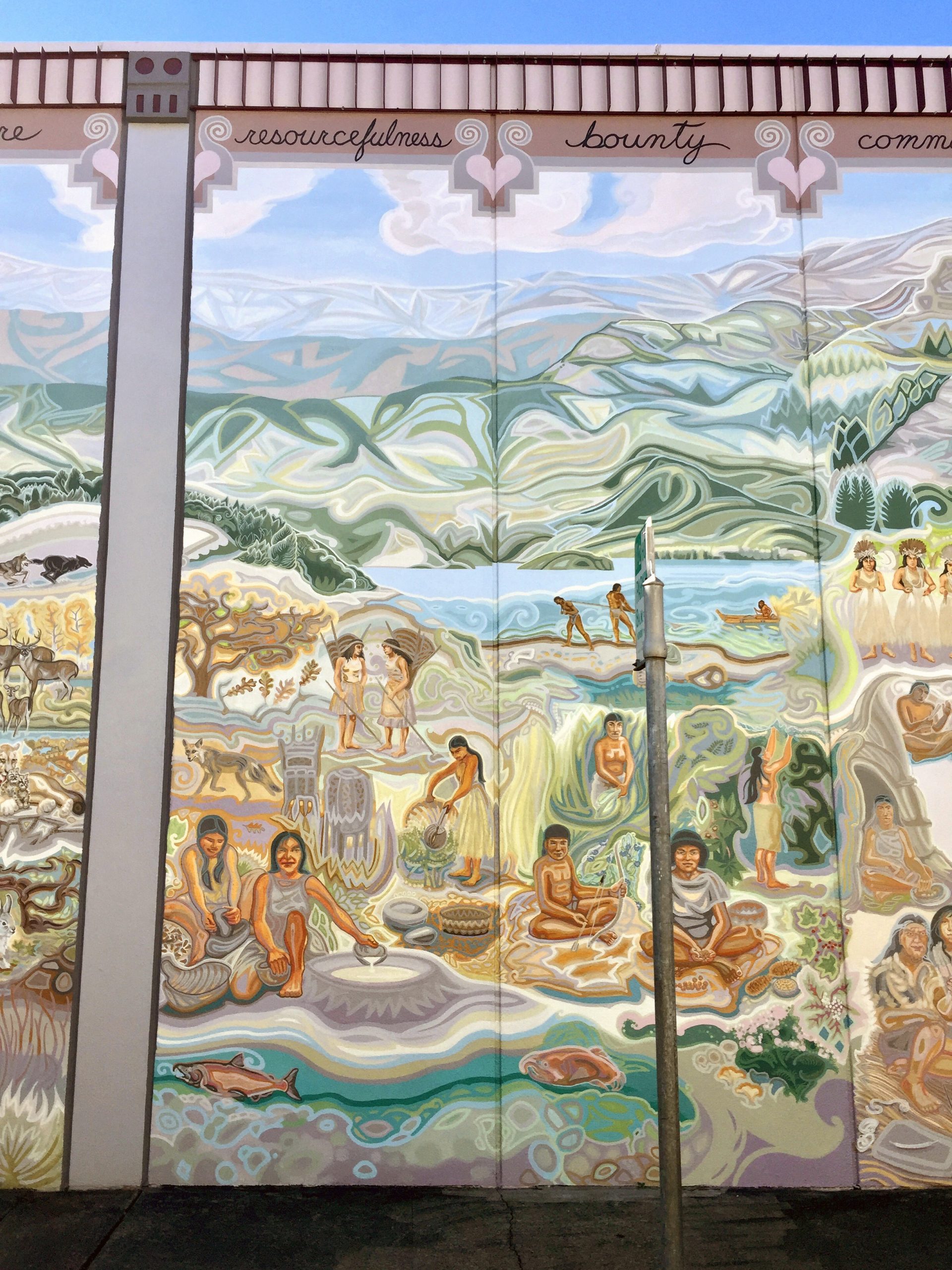
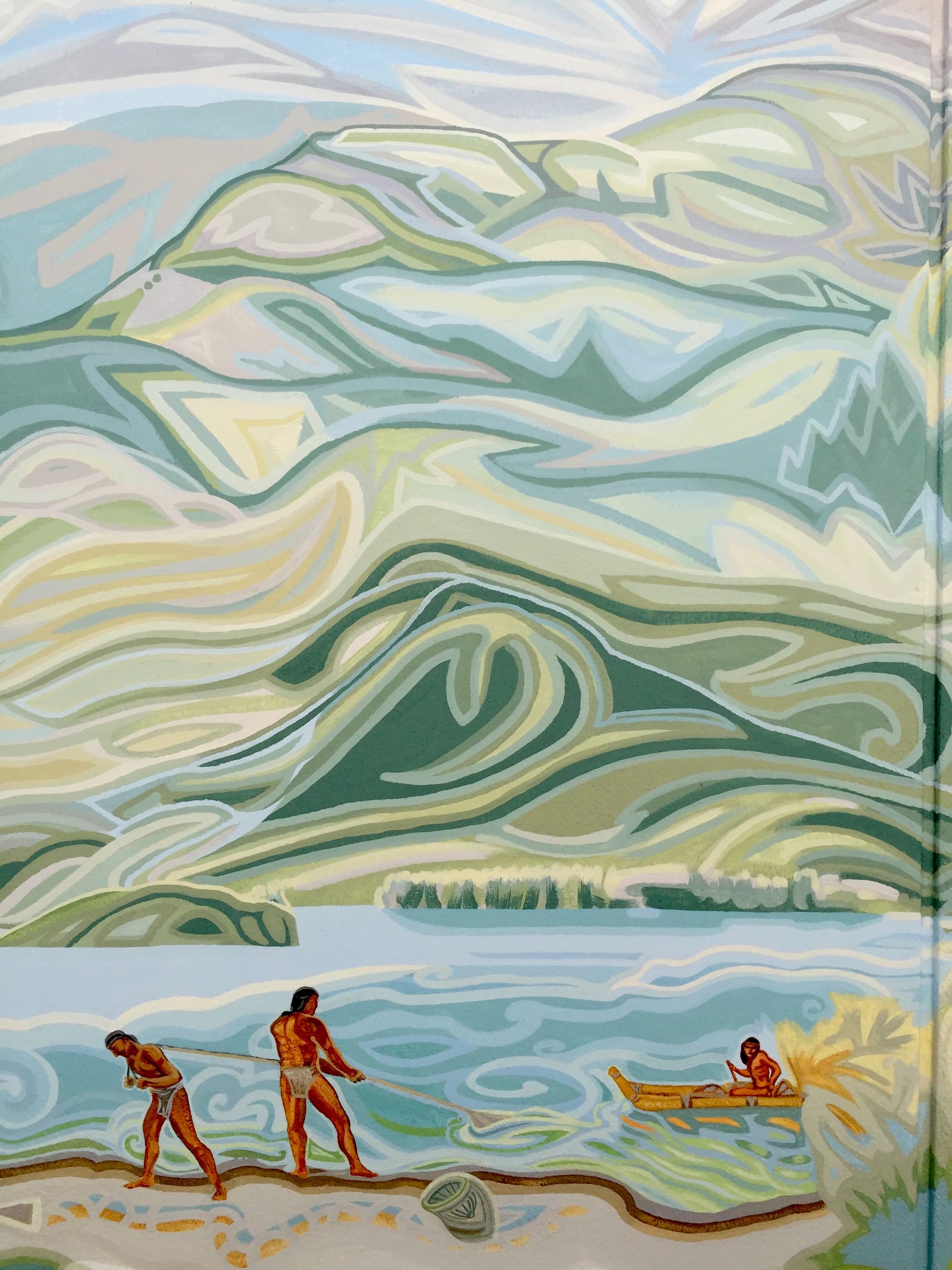
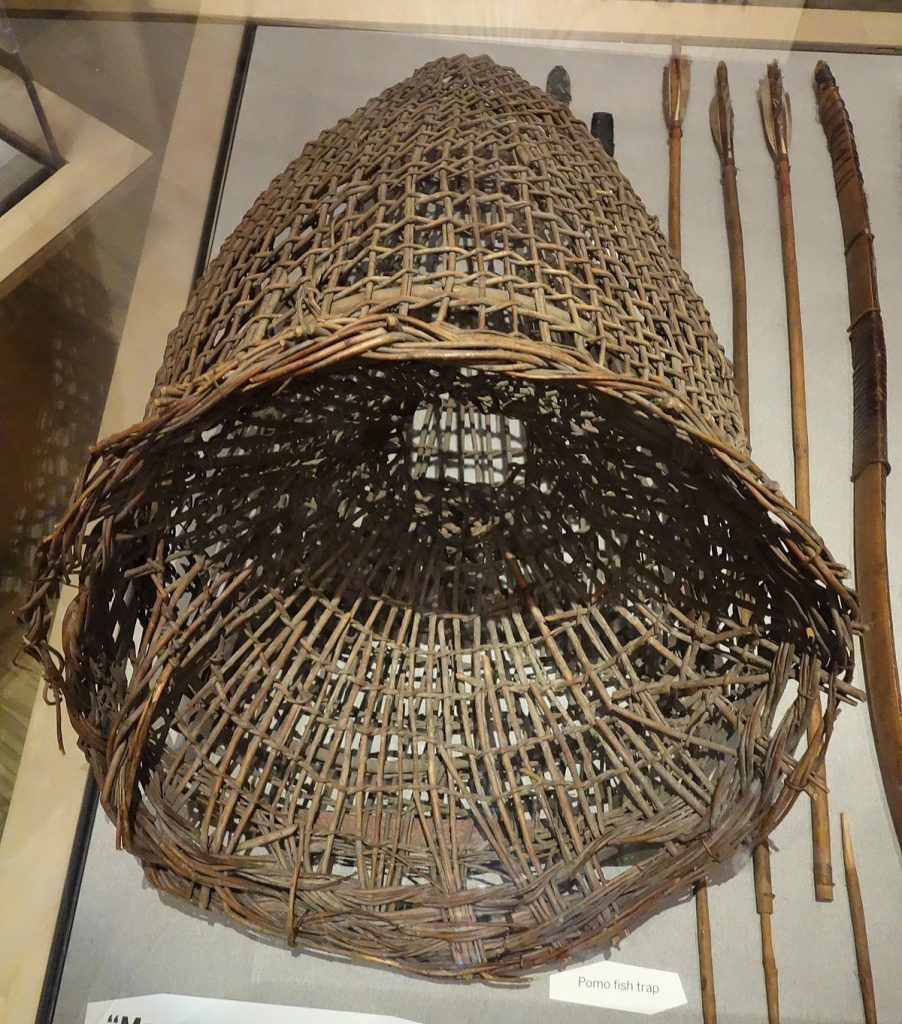
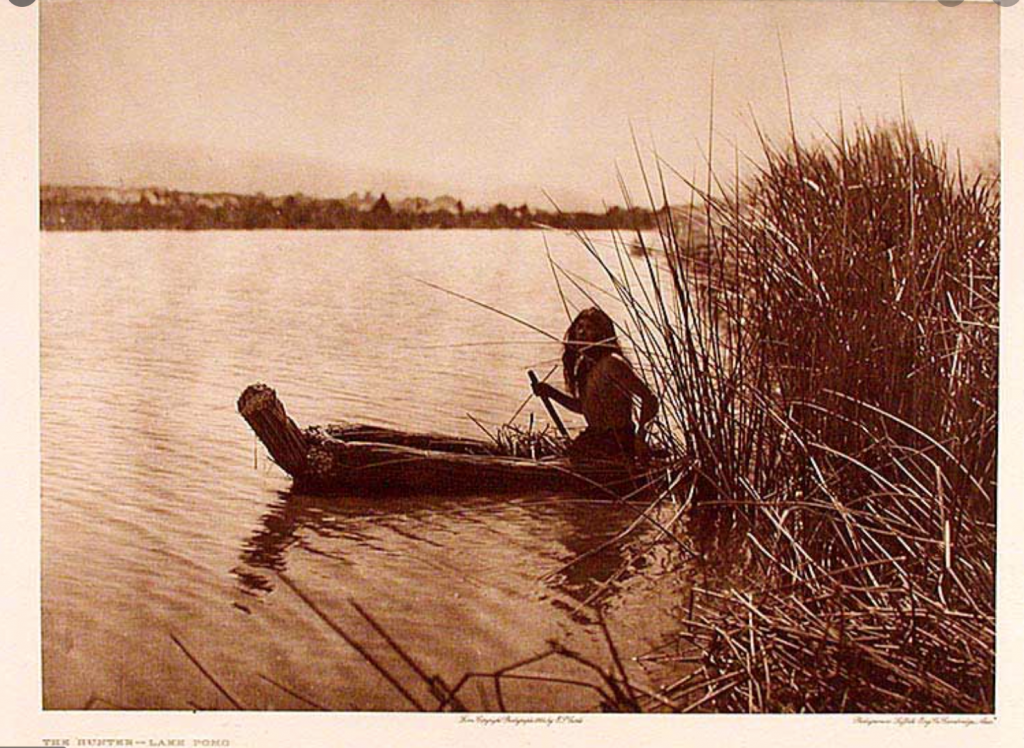
Hunting and gathering
Pomo men were hunters and fishermen (of salmon, perch, trout and more). The large, strong, open-weave baskets used for trawling were actually two-in-one conical baskets woven together at the rim: the smaller inner cone was woven with an open tip so fish would swim in and through the little hole, then be trapped in the larger (connected) basket.
The canoe is made from bundled tule rushes, seen growing nearby, at the time of practically unlimited supply. This is bounty AND resourcefulness!
Pomo women foraged for seeds, berries, edible greens and roots, mushrooms, and grasshoppers, which had a “sweet, butter, nutty flavored”*
* Lassik/Wailaki woman, Lucy Young

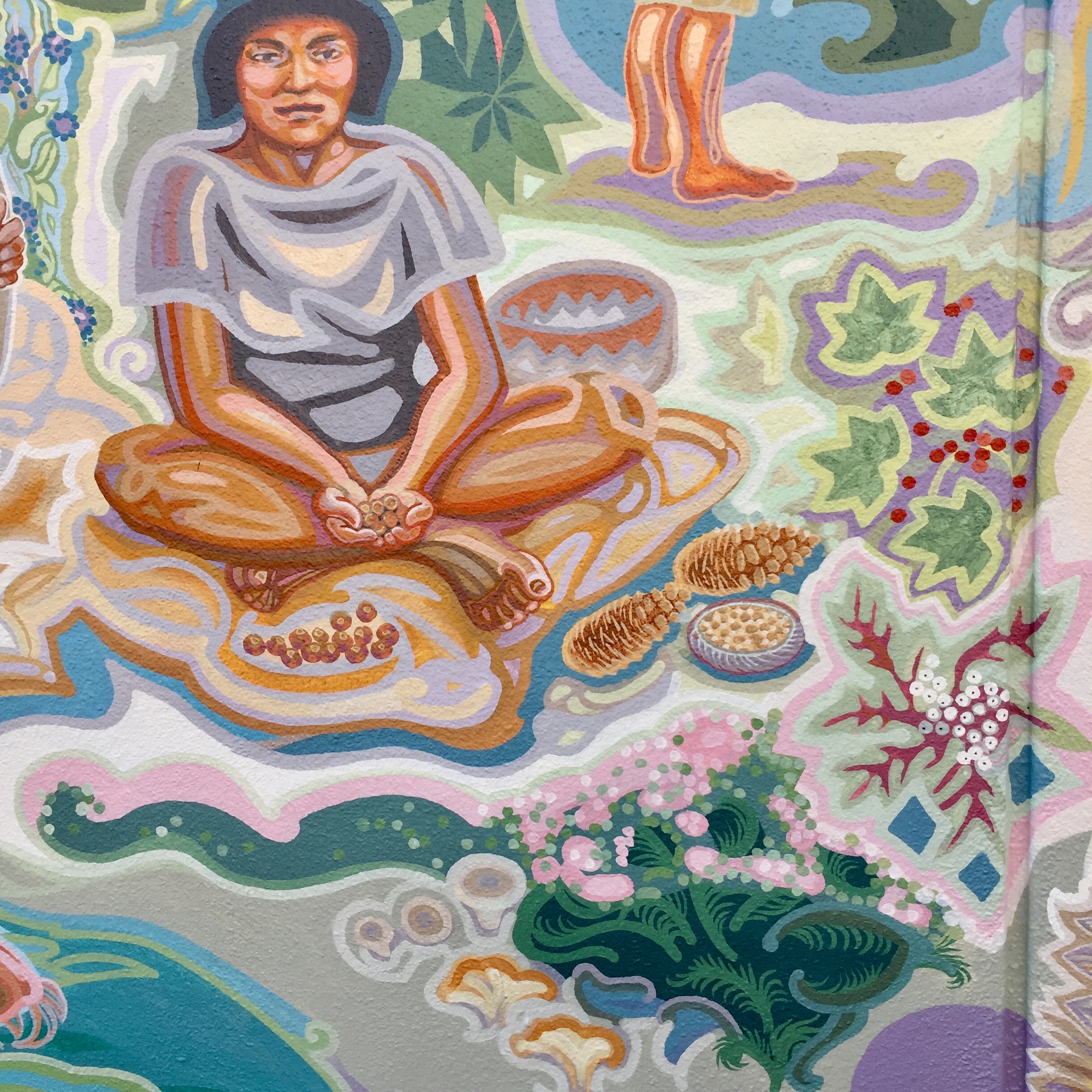
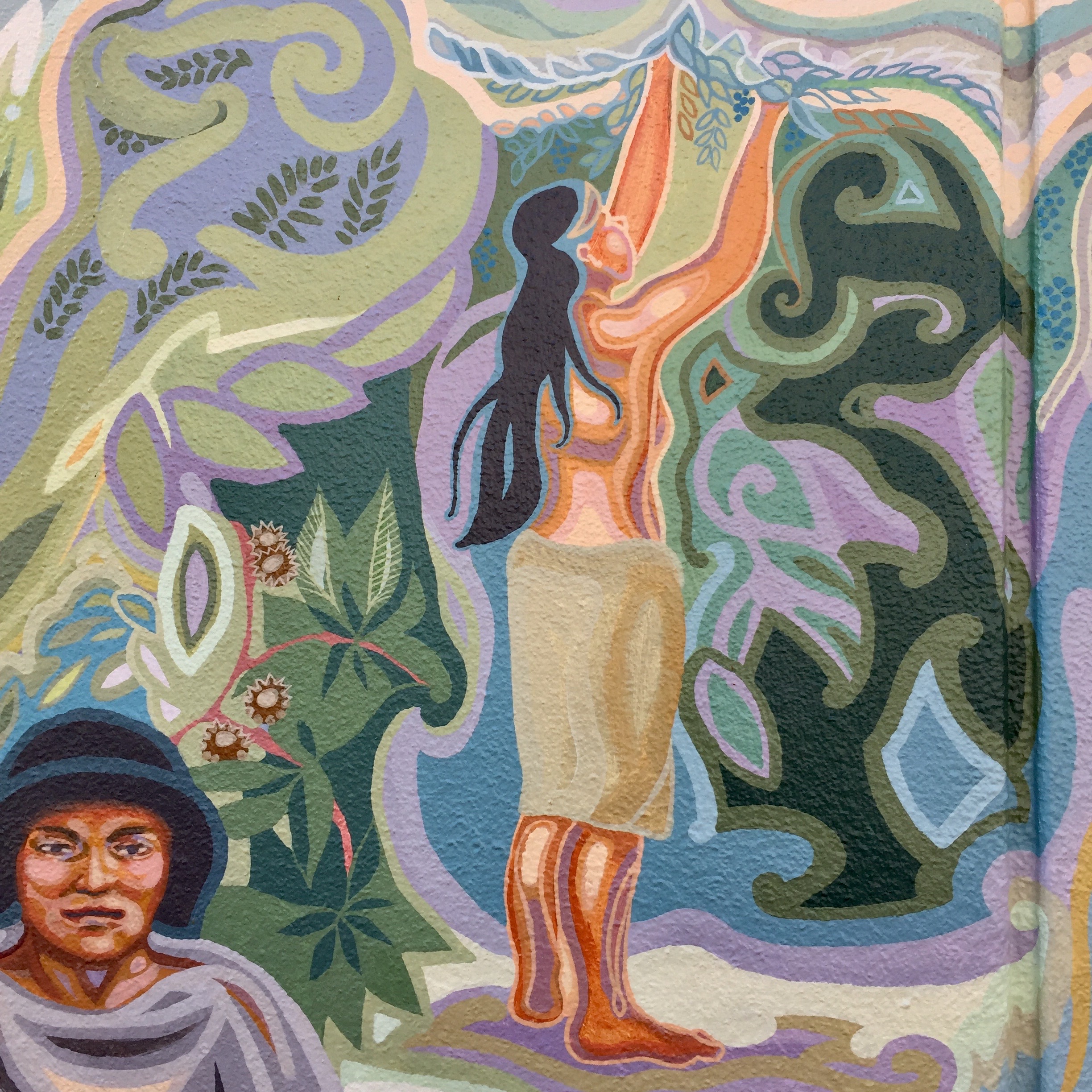
In the mural, a young woman gathers wild grapes at the upper right of the foreground, and blue elderberry appears near the young boy with his bow and obsidion-tipped arrow from volcanic Clear Lake . A woman is sorting buckeye nuts, which appear behind her, as well as pine cones and a bowl of pine nuts.
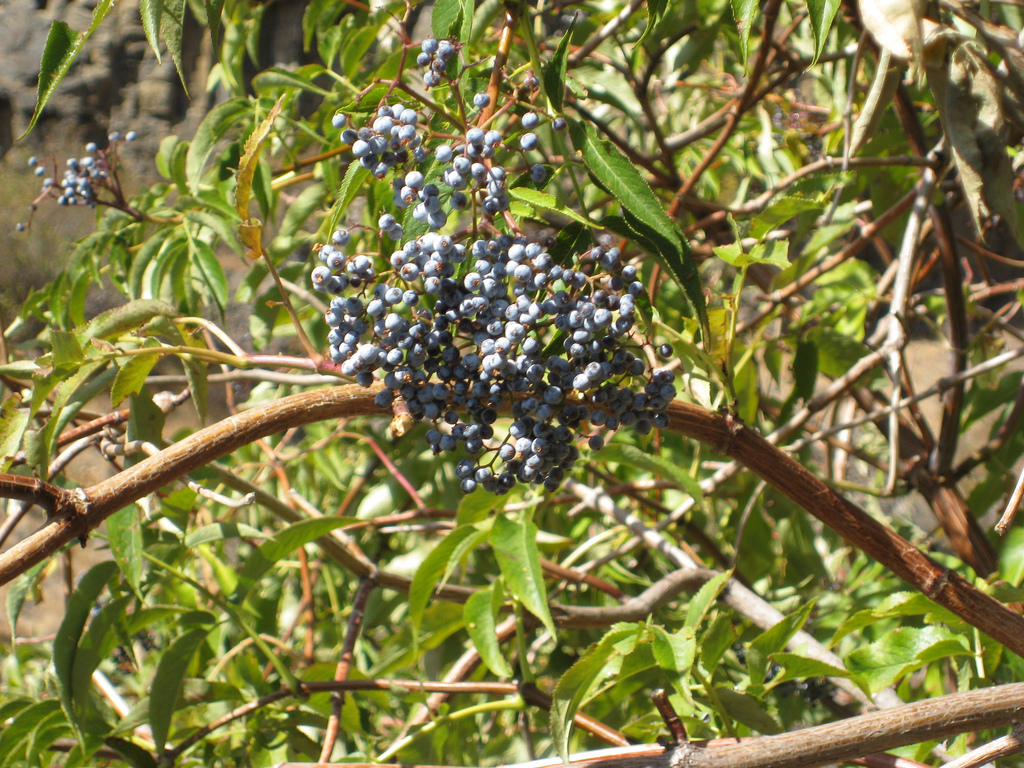
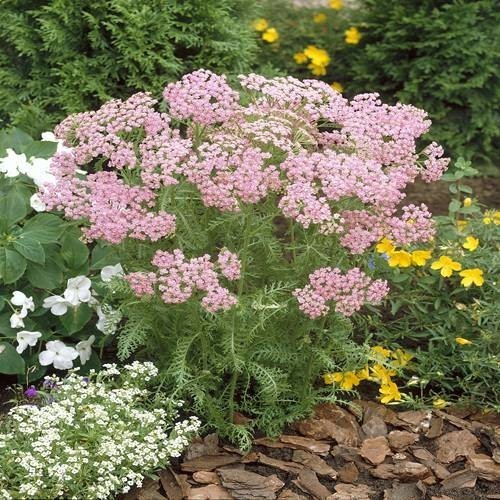
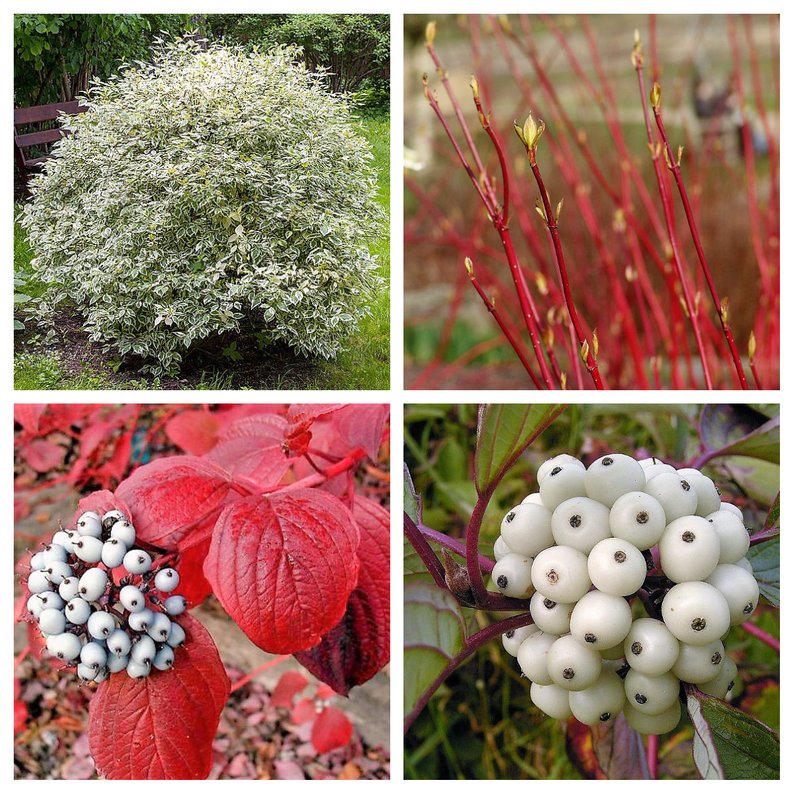
Below her and to the right: thimble berries, the white winter berries of red twig dogwood, medicinal yarrow, and mushrooms including chanterelles, seen below with my own bountiful breakfast!

Tattoos and toplessness
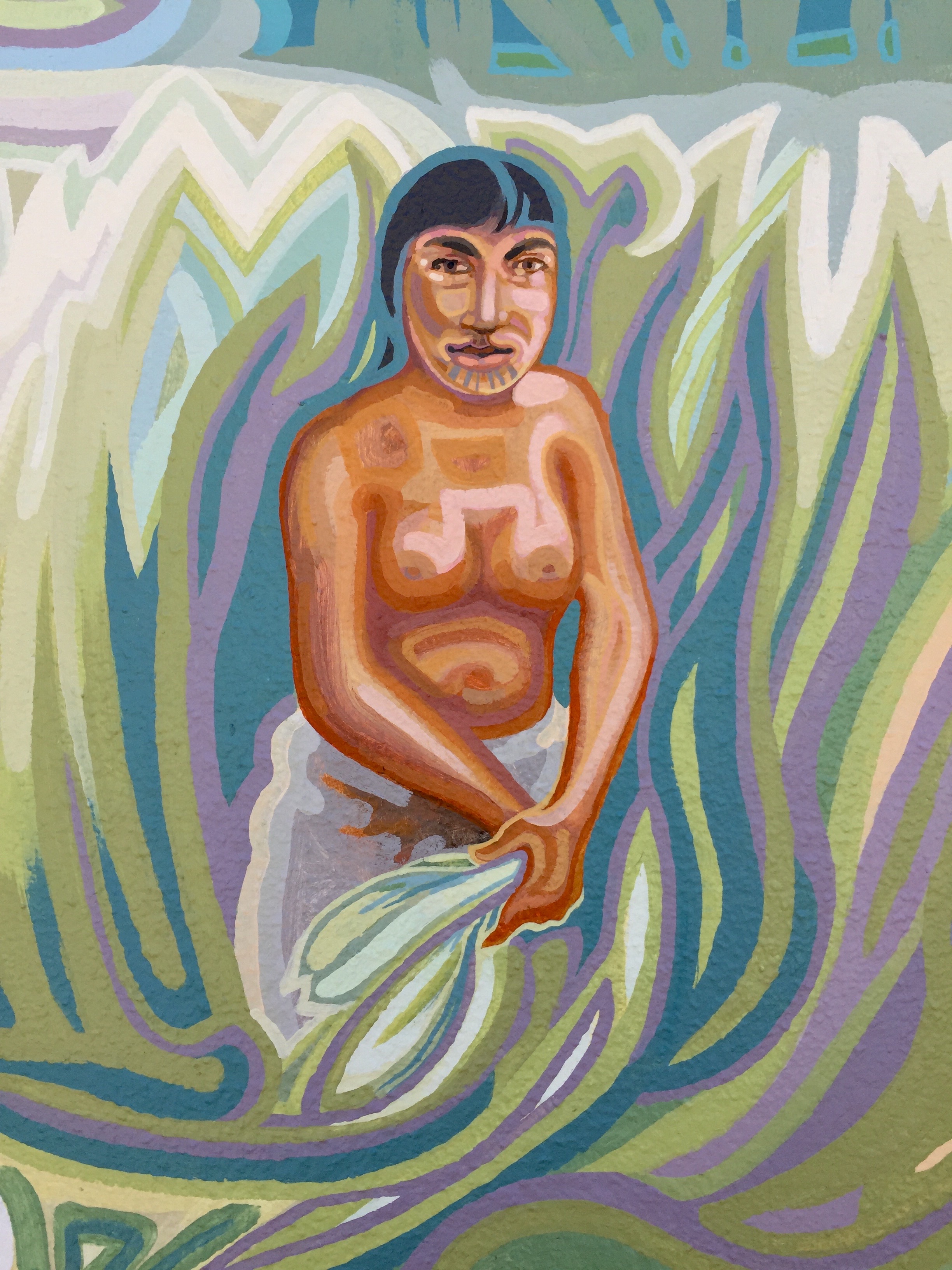
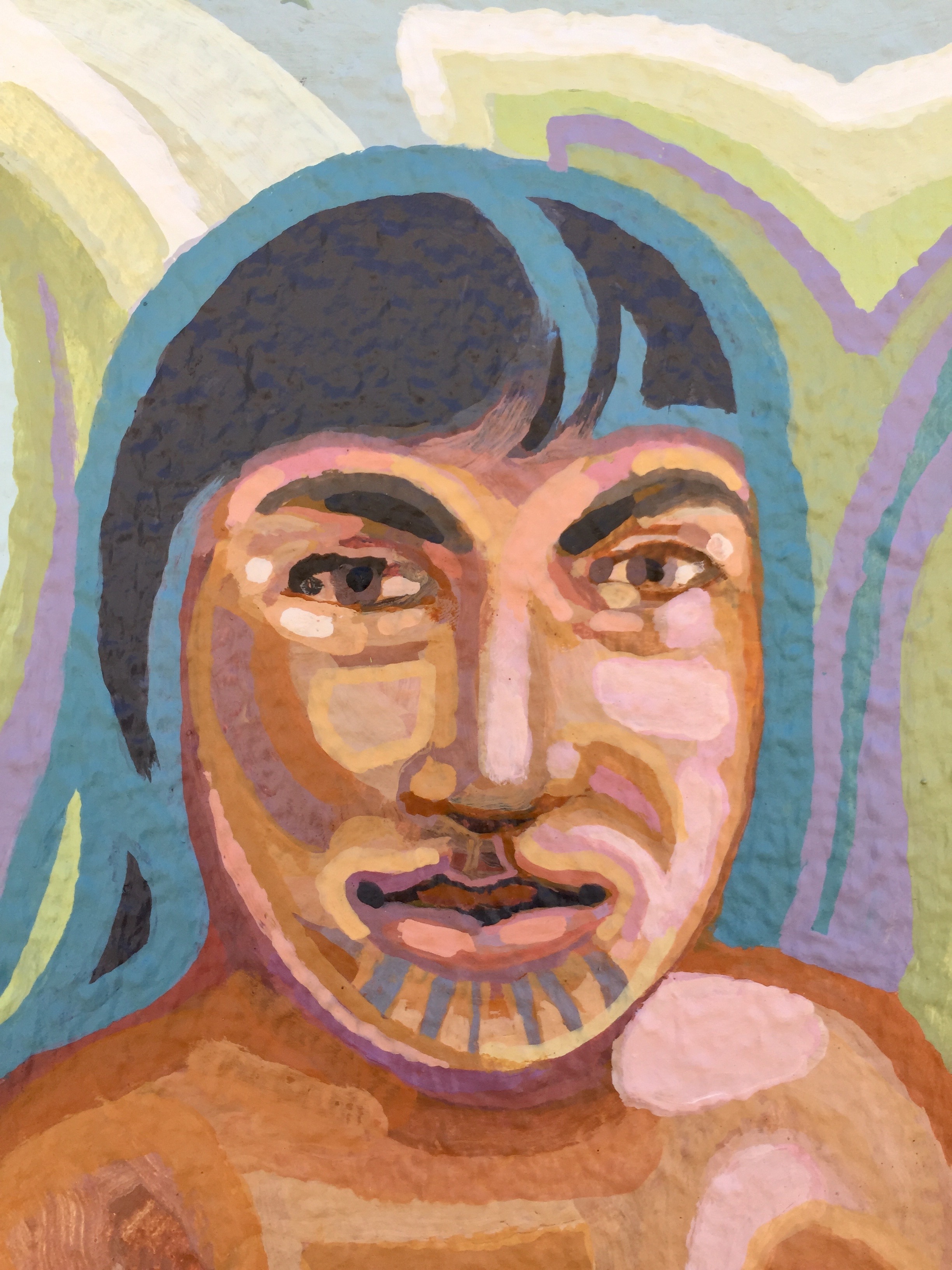
Pomo women gathered sedges and willows for basket weaving as well as clothing manufacture.
The woman gathering rushes has traditional chin tattoos, which were not merely a fashion statement, but were earned. A Pomo tattooist would cut the skin and apply juice from green oak galls. Then poison oak was applied to the wounds. (Source: California Indian Women and Tattooing, Past and Present, Native women roundtable discussion at Grace Hudson Museum, 2019)

The engravings including the Pomo design (lower right) are from Stephen Powers, The Tribes of California, 1877. Published by the Department of the Interior, U. S. Geographical and Geological Survey of the Rocky Mountain Region.
Native culture did not suffer western shame over nudity and the temperate climate gave rise to minimal clothing in the summer. I wondered how this would be received by a modern audience, but everyone I asked said “Be true to the traditions of the people!” Hence, she is topless.
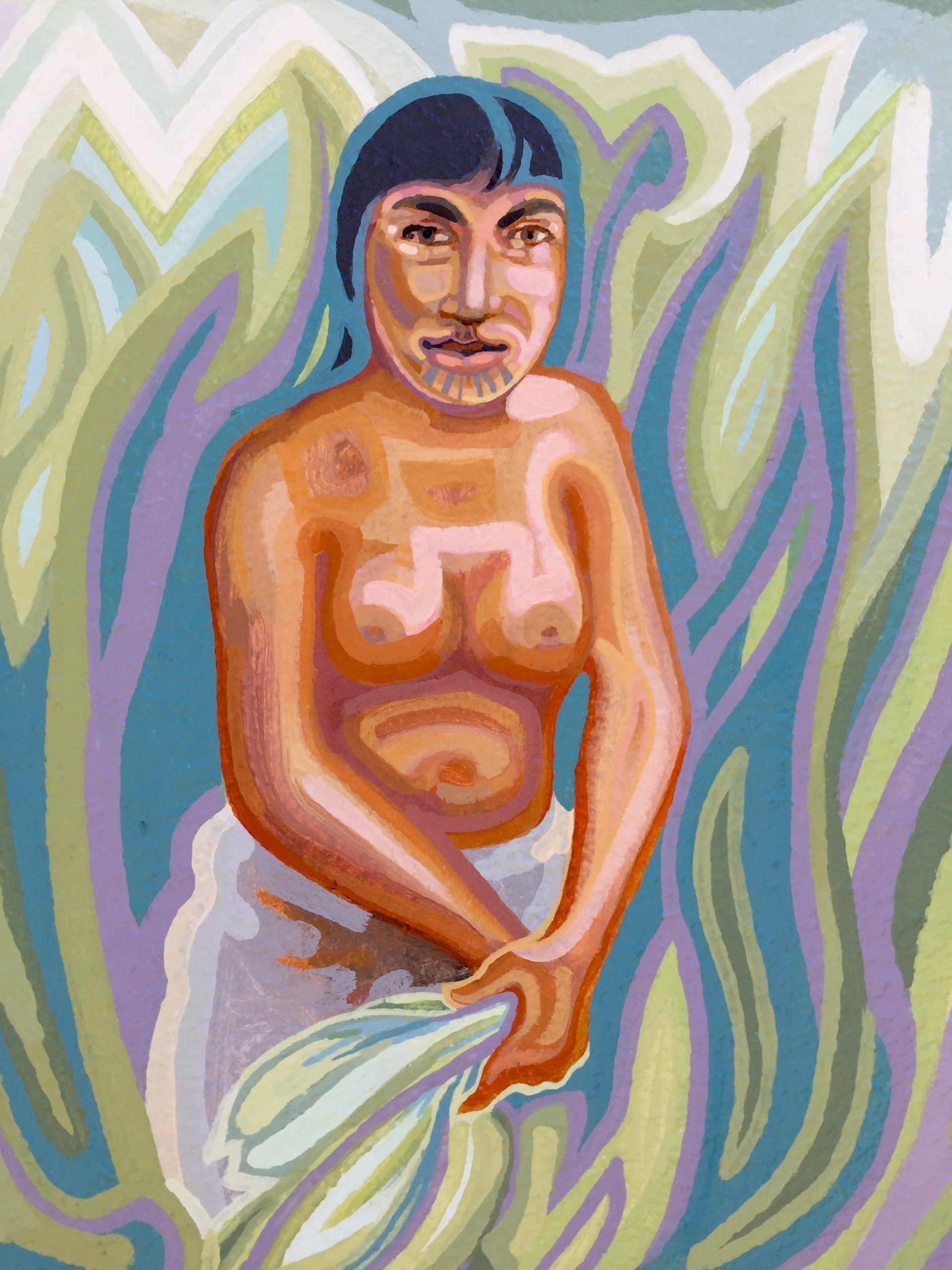
However I wasn’t always so sure about portraying nudity. I wondered whether some people could handle it. The figures in the engraving that was my source for the acorn gatherers were nude, but I gave them tops. I showed other topless women in poses that were shielded.
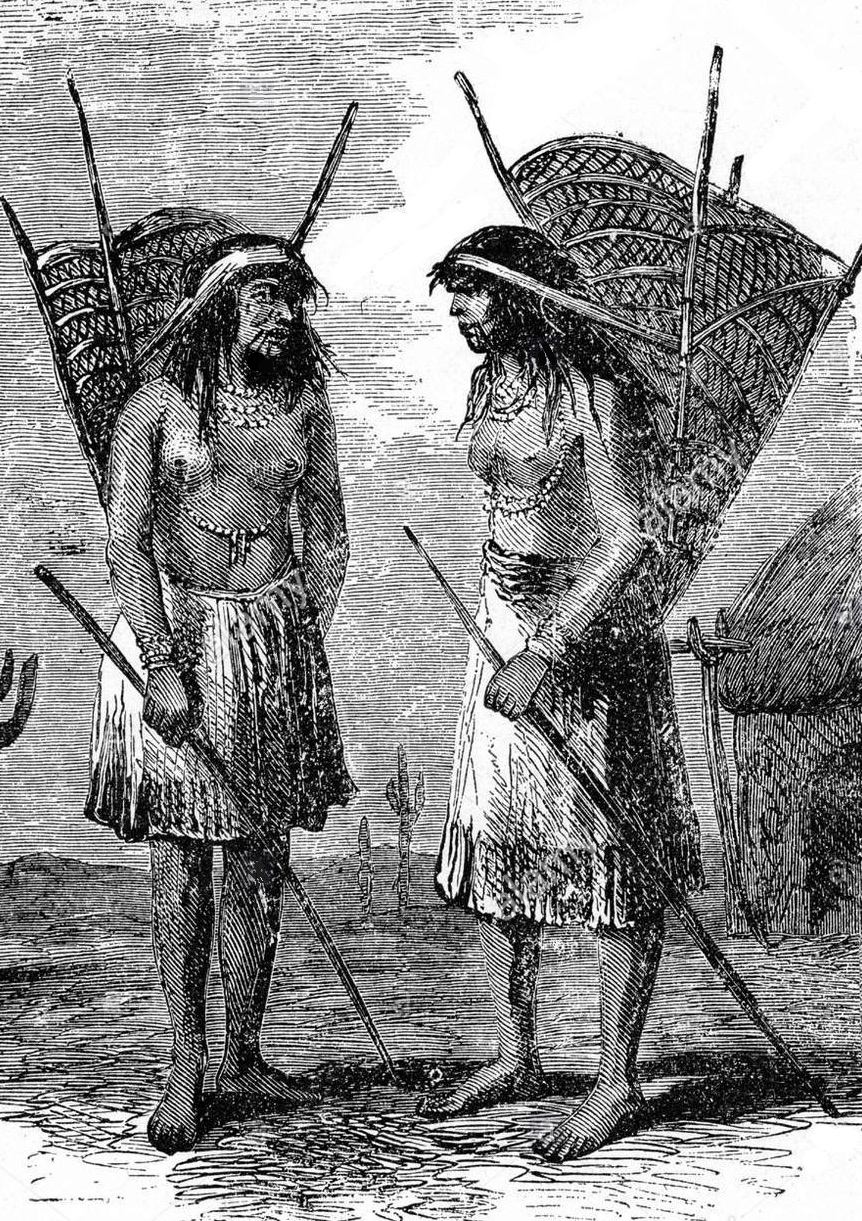
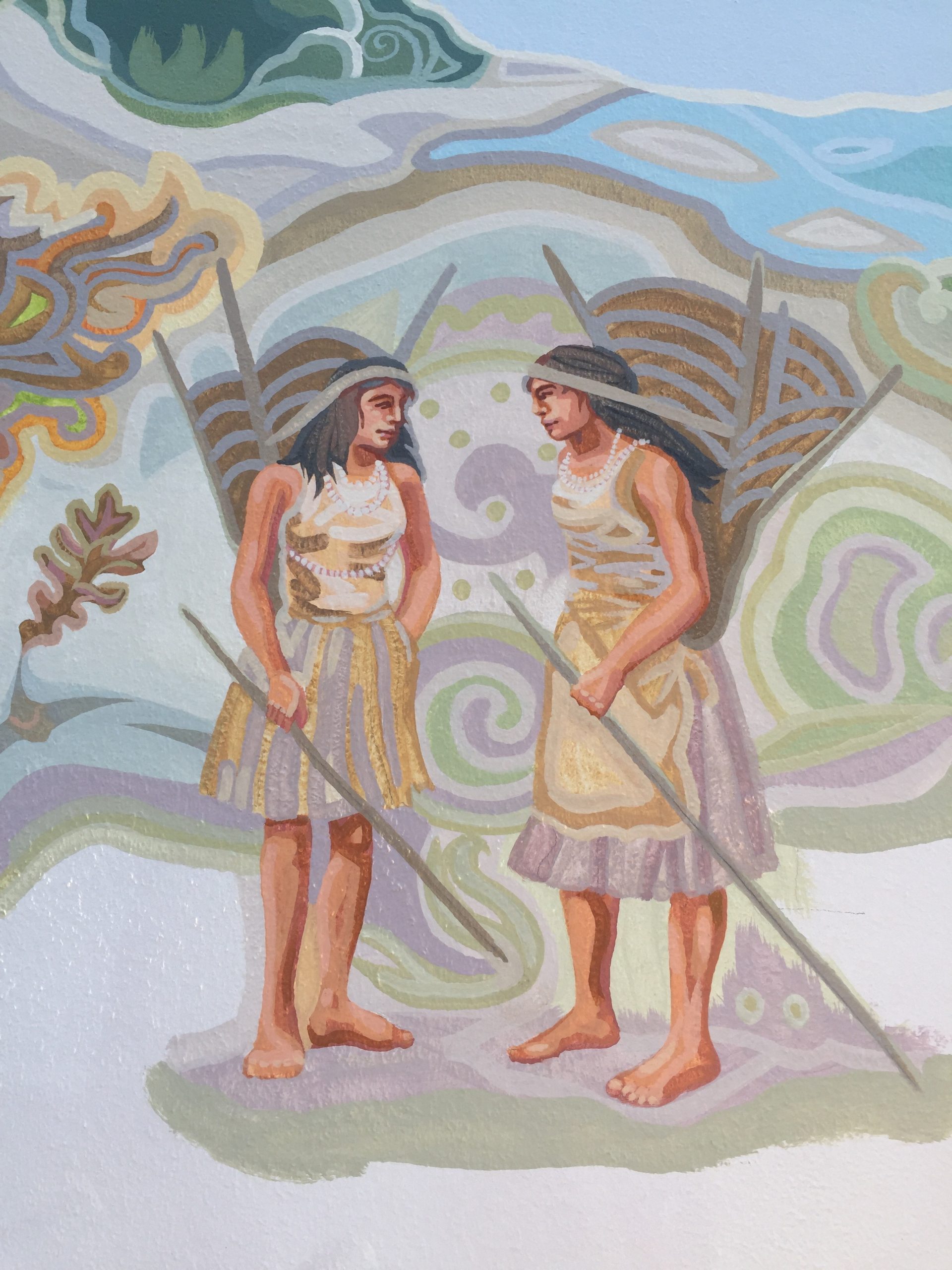
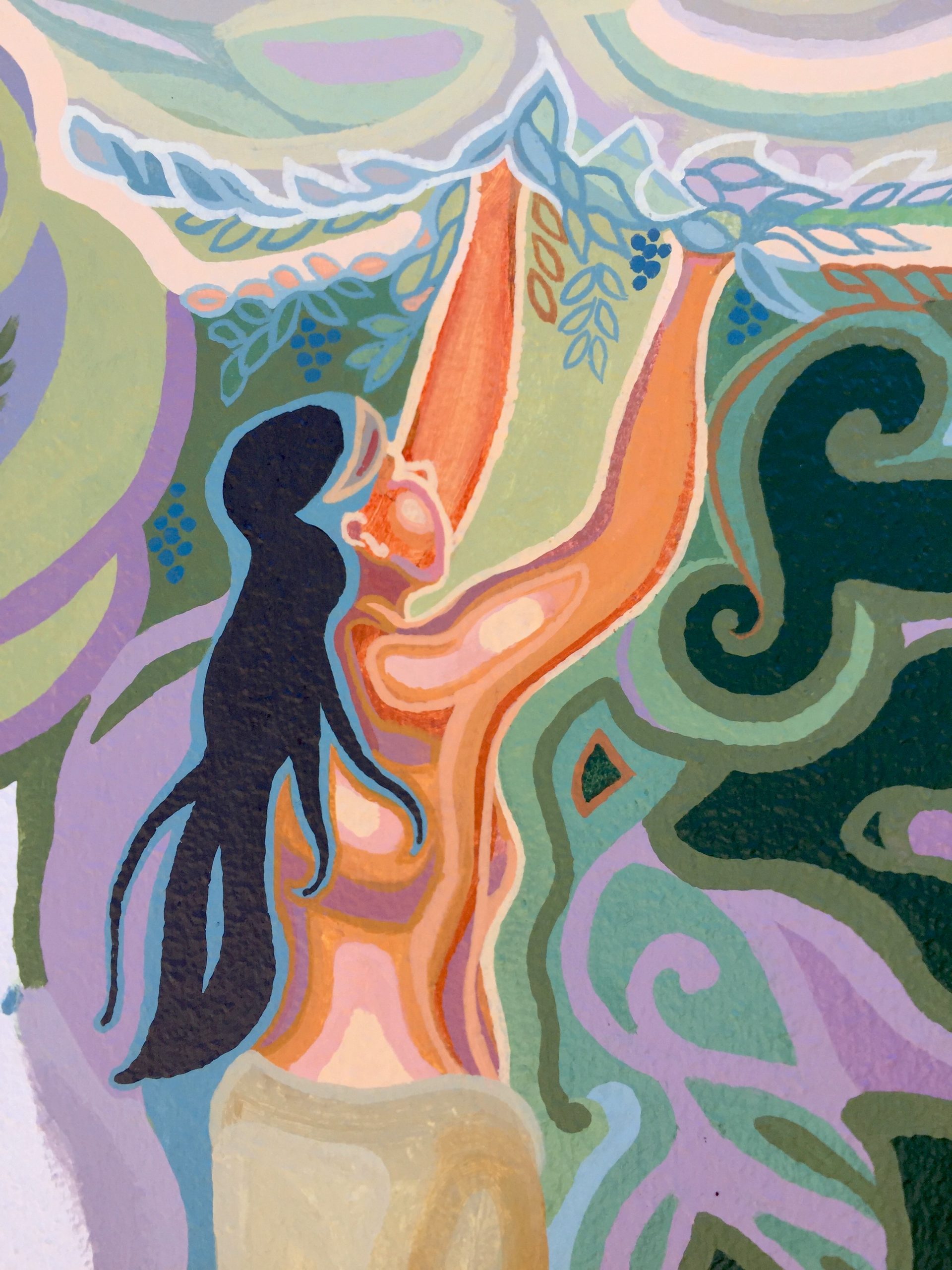
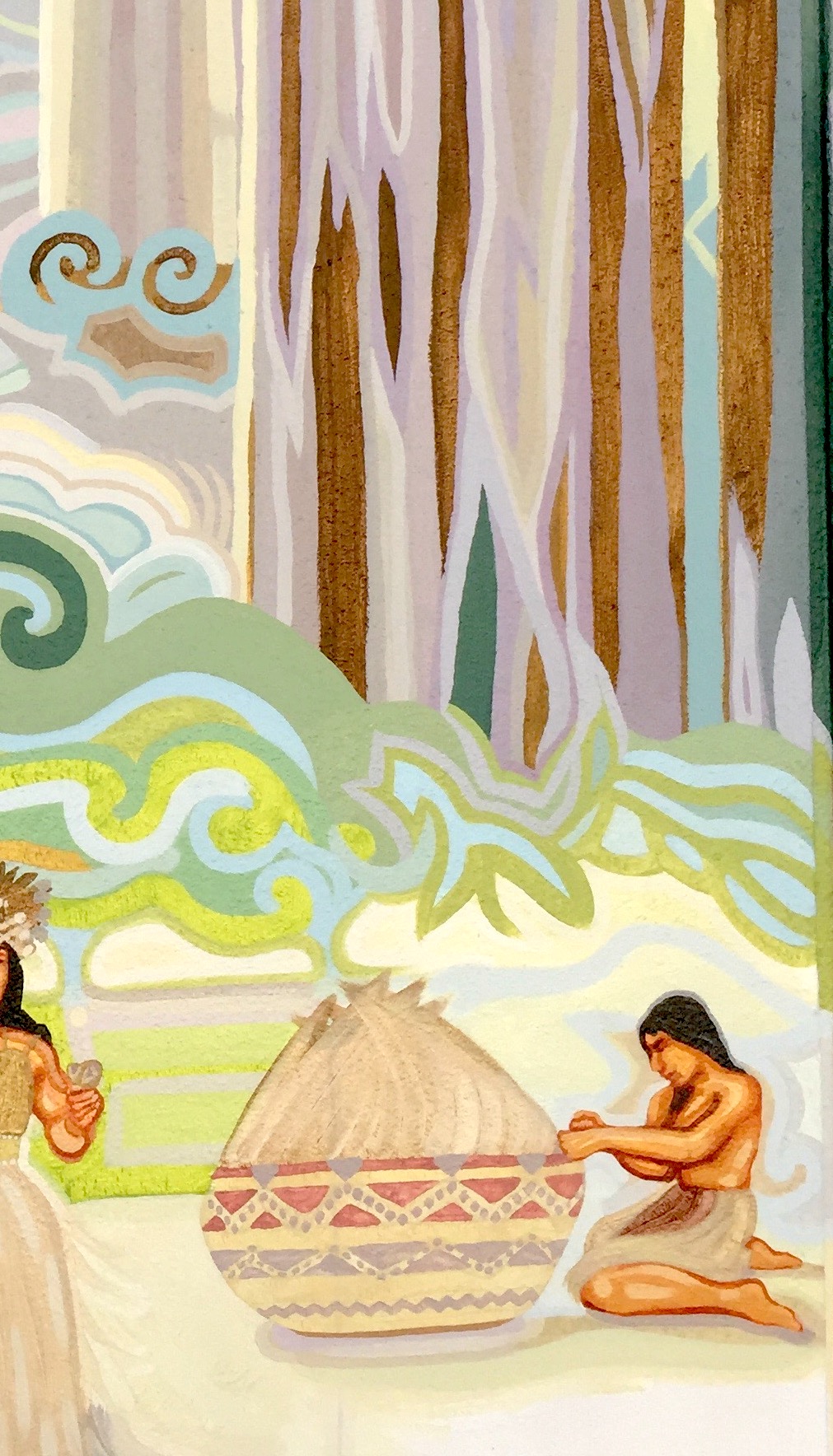
Another problem is knowing how to paint clothing from this period.
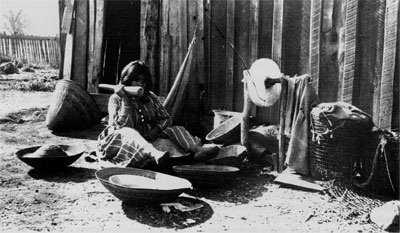

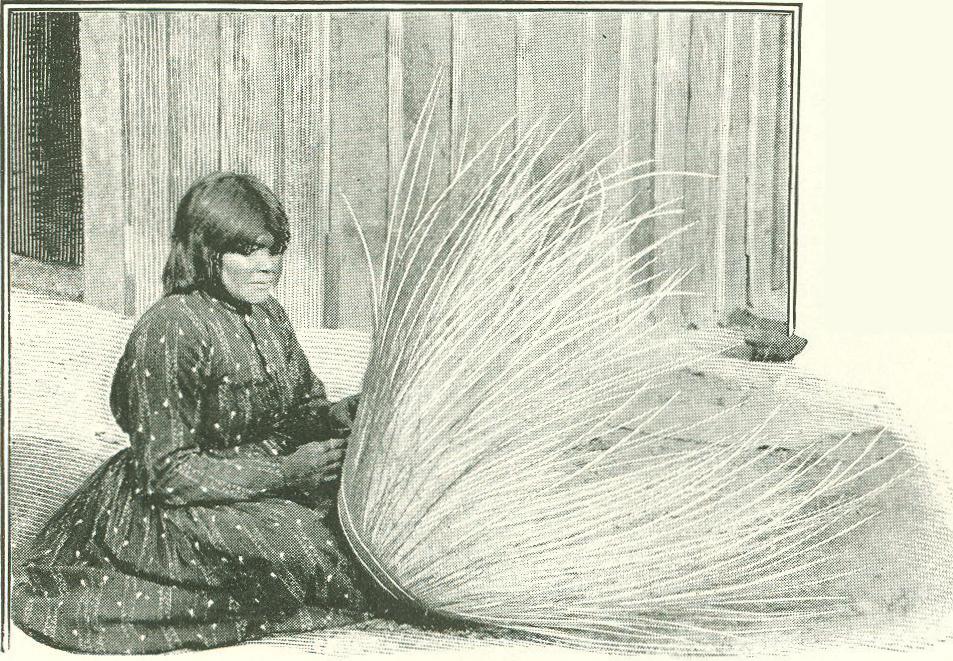

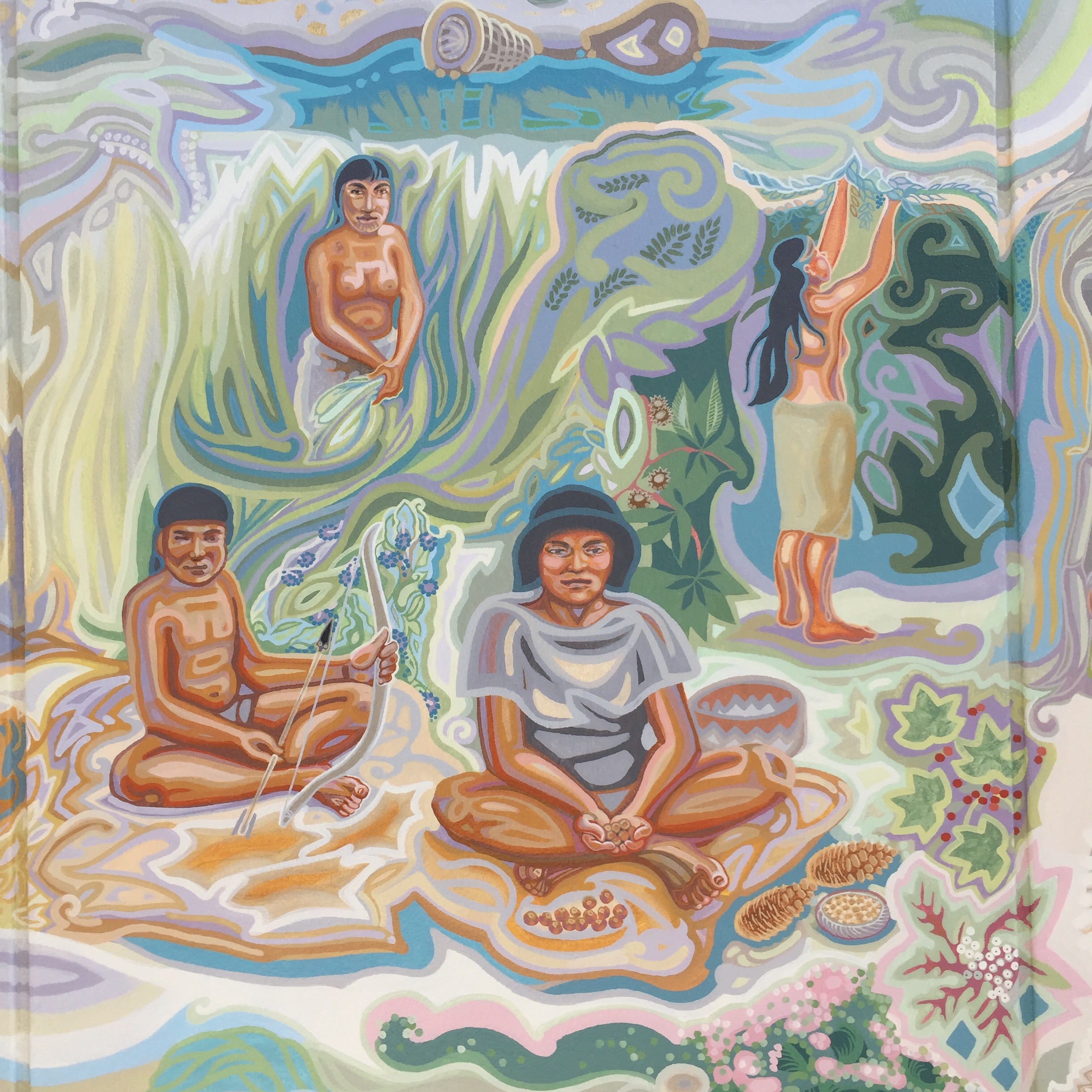
Clothing
Native people used tanned leather and fur as well as grasses to make clothes, and decorated them with feathers, shells, beads, and other materials. I did my best to consult with contemporary Pomo and experts about styles, and relied on a few illustrations by early explorers. But because photography was invented in 1826, EVERY photo of Native Americans was taken after colonization, and they understood the necessity to conform to western styles of dress. I certainly wanted none of that in these panels about the thousands of years of life in this region before European incursion. So I kept the garments simple and, being a seamstress, sometimes painted what I would have made for myself.
Painting process
Here are some photos showing the stages of sketching in paint and refining with each step.
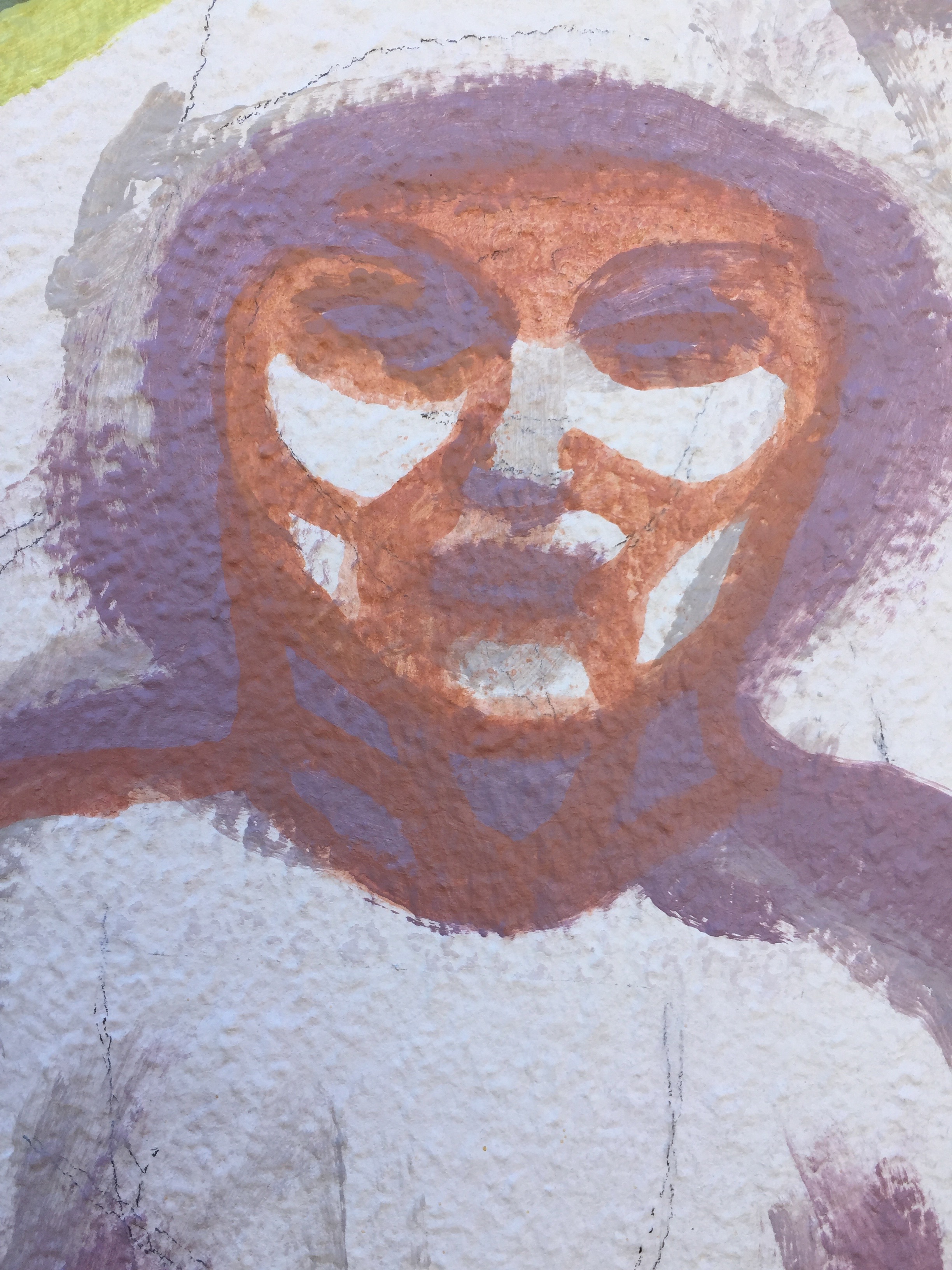
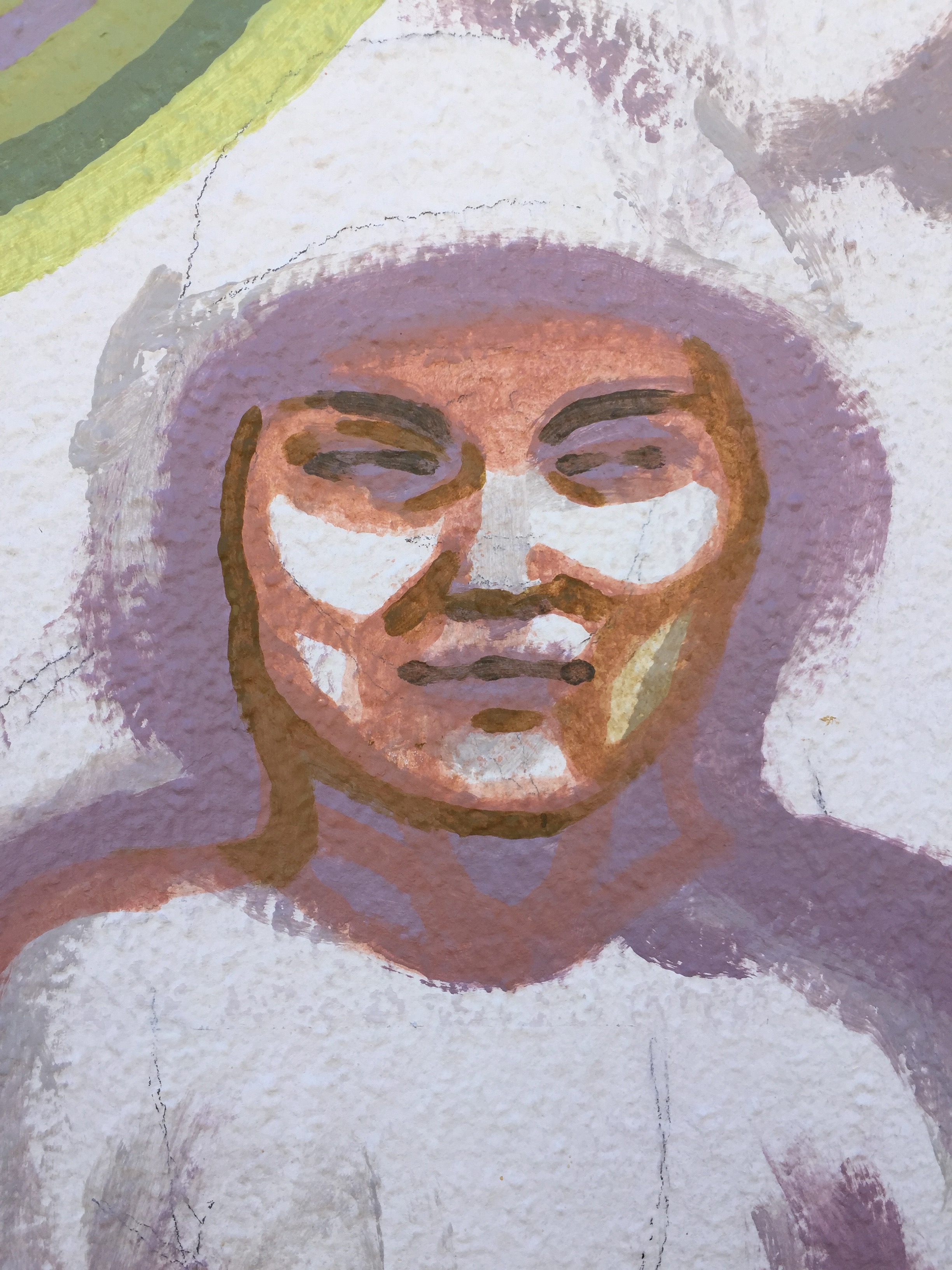
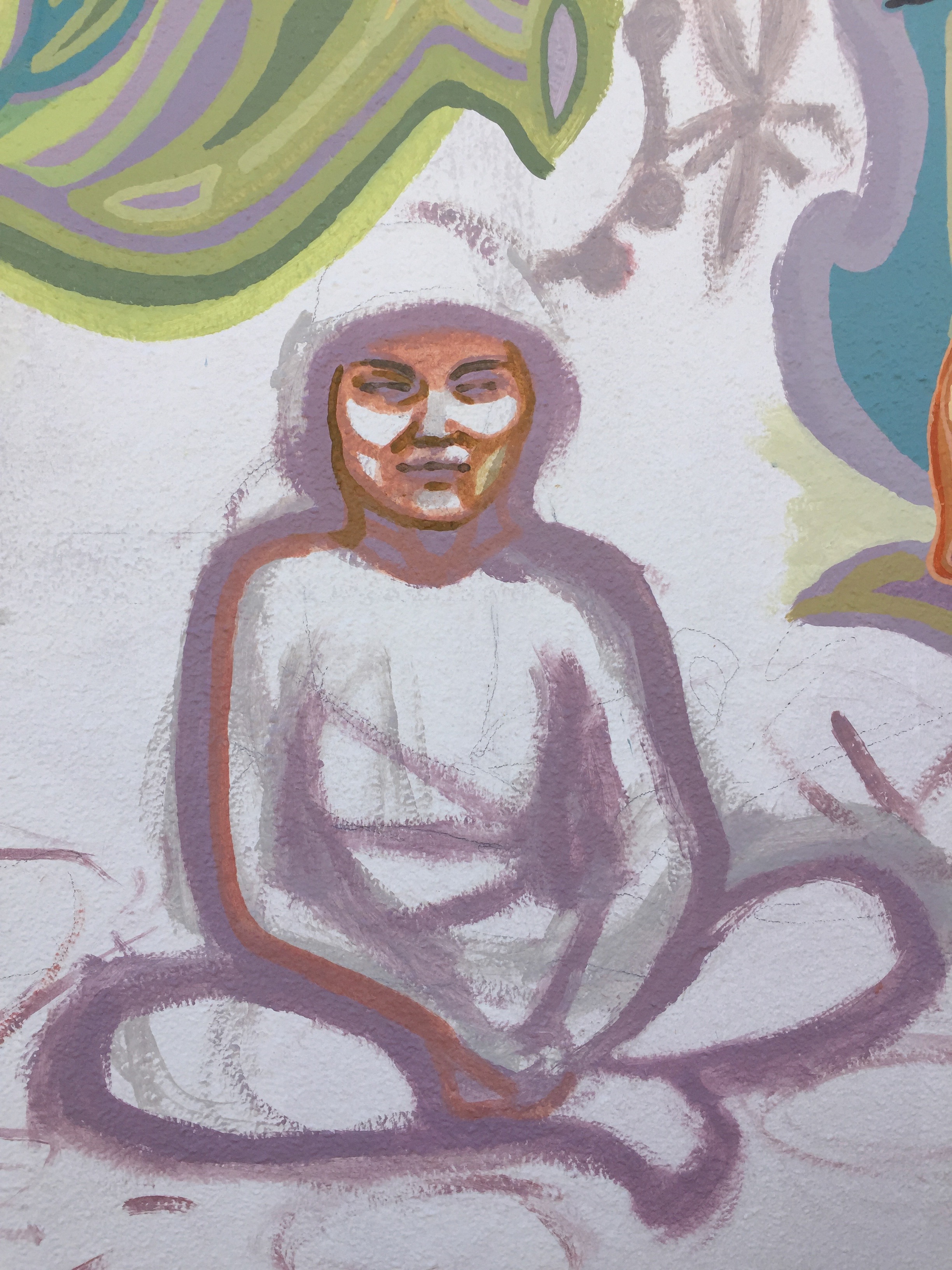
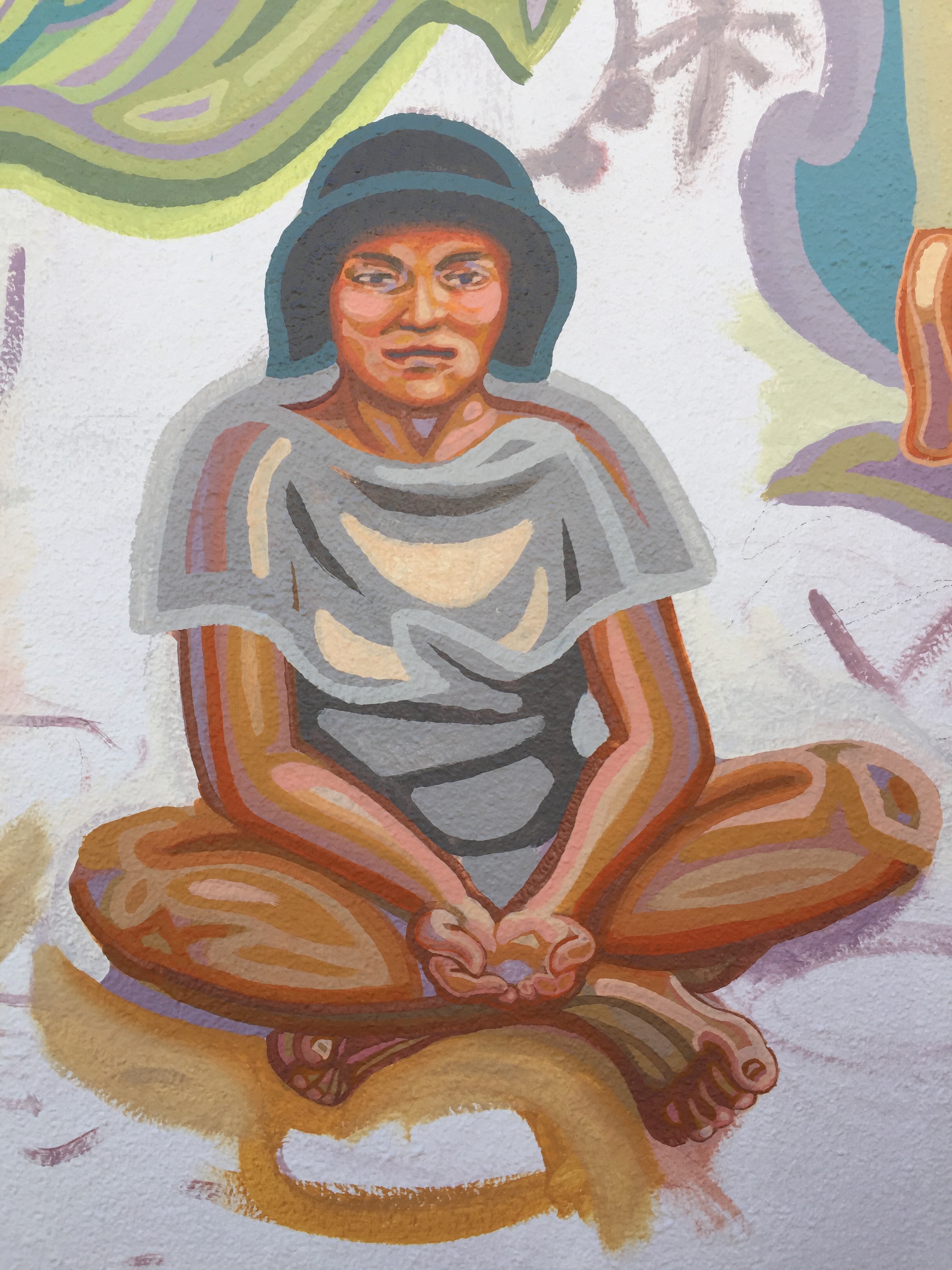
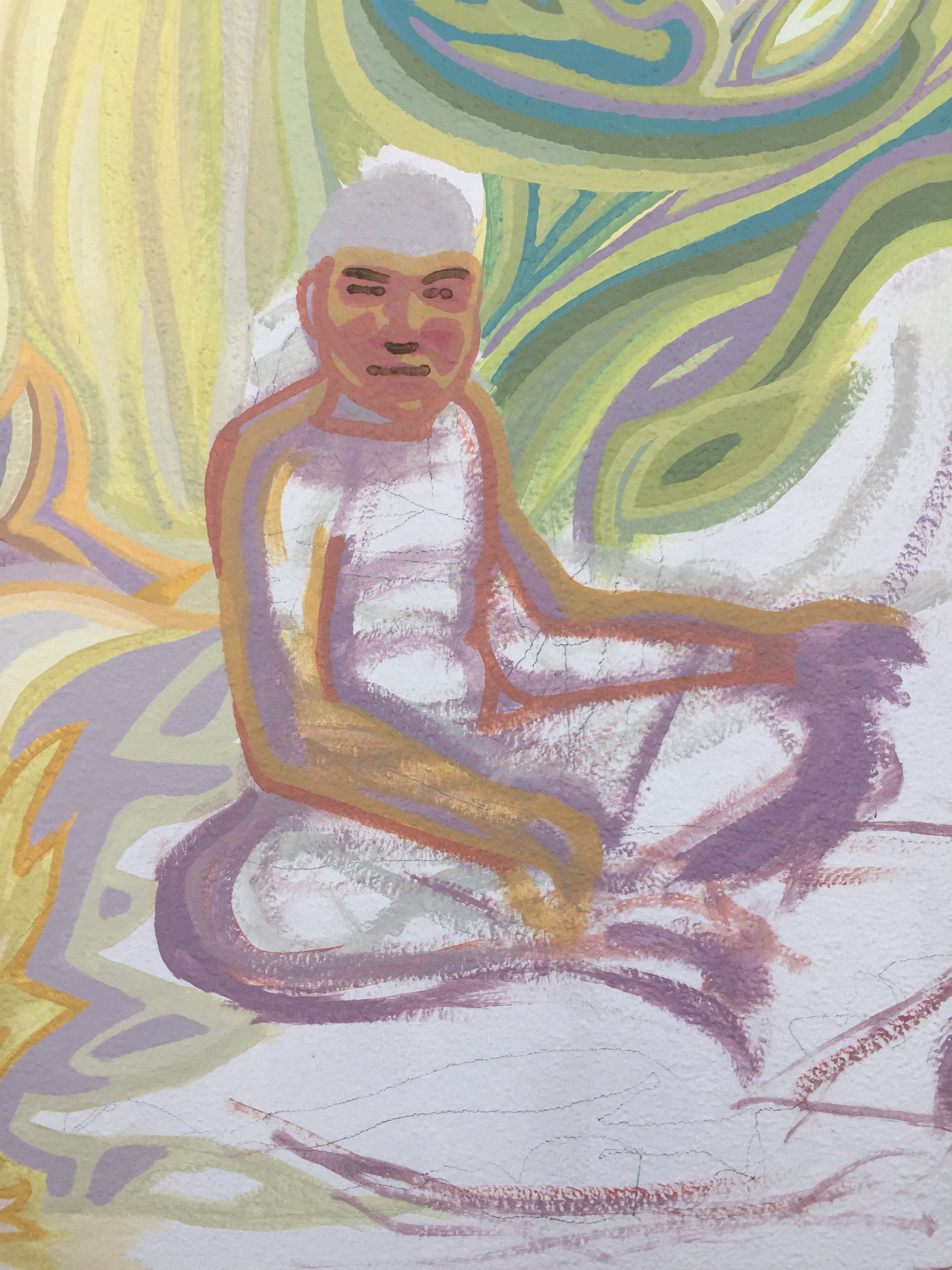
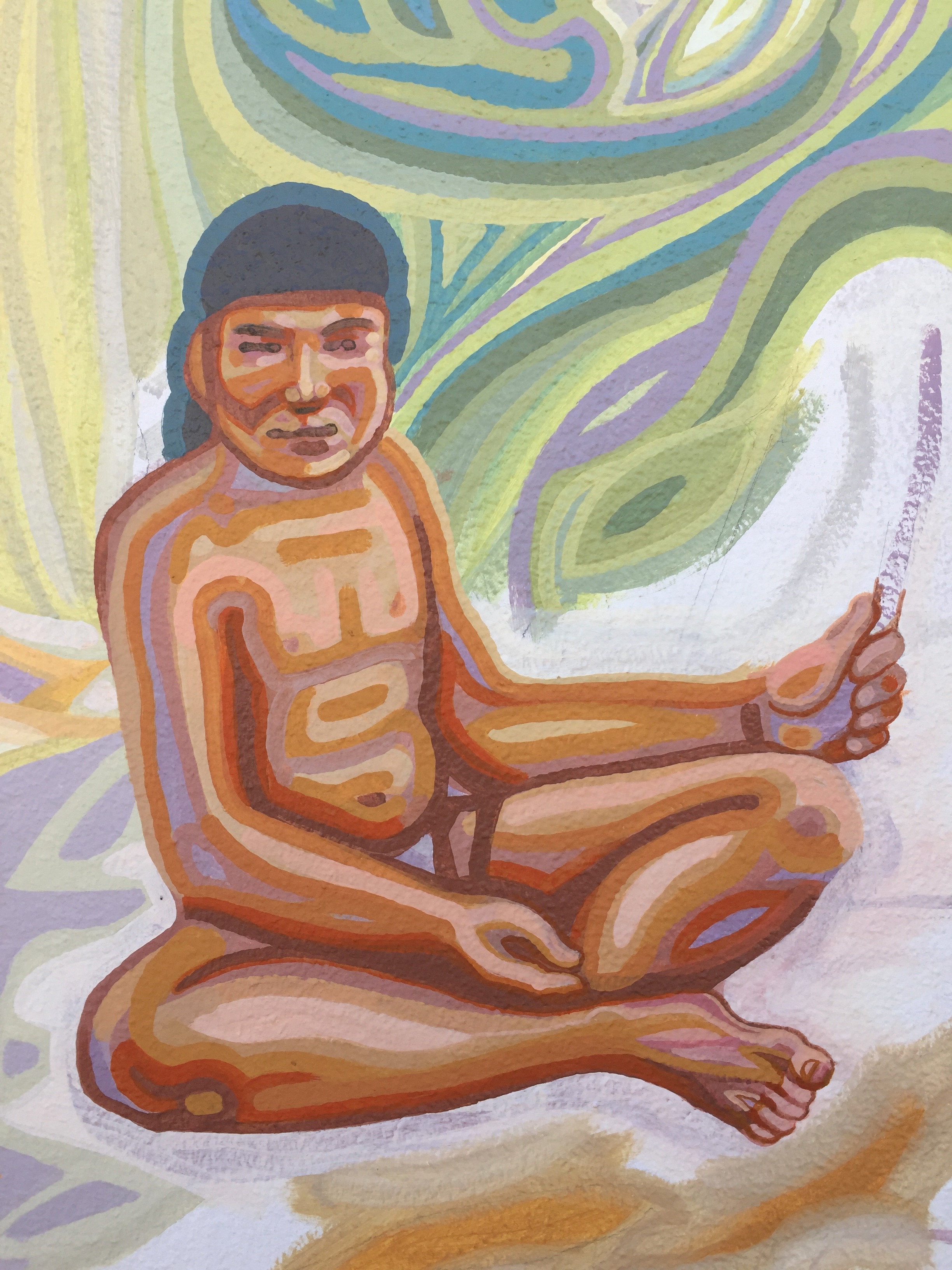

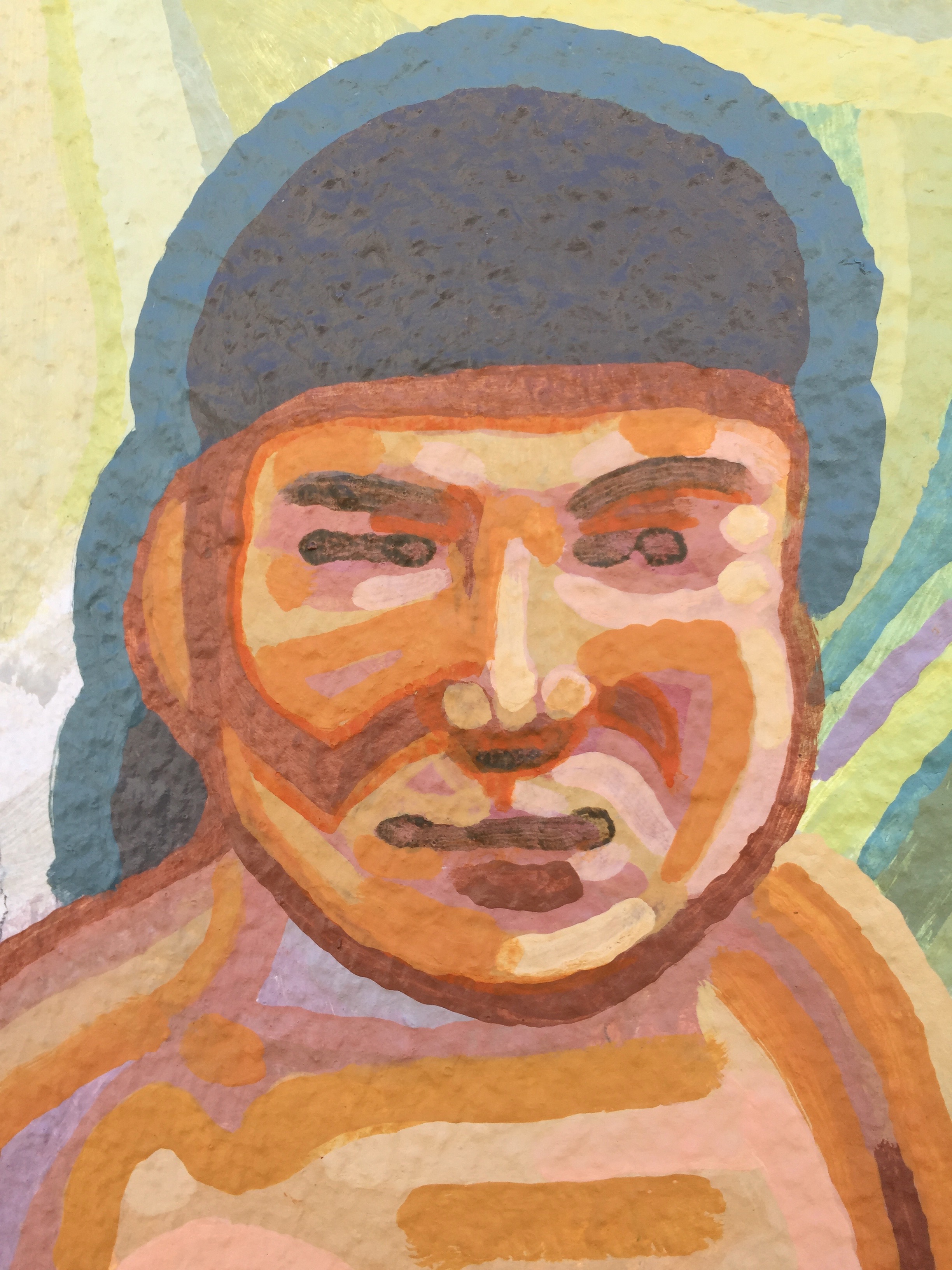
You will notice how rough and nobly this wall is, making it a lot harder to be precise!
Next panel: